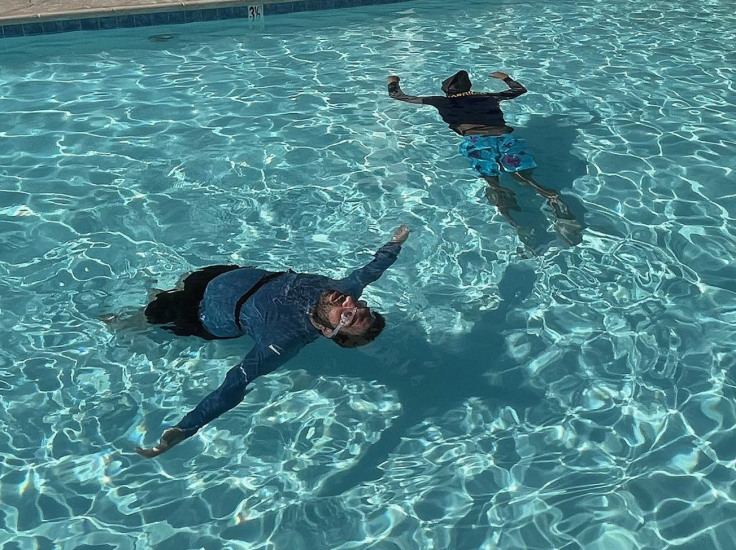
In a world where 236,000 people lose their lives to drowning each year, and with 2.5 million deaths over the past decade, "Melon" (Mary Ellen) Dash, the founder of Miracle Swimming School for Adults, is on a mission to address the pressing issue of double drownings. With 47 years of experience as a professional instructor, and author of "Conquer Your Fear of Water, A Revolutionary Way to Learn to Swim Without Ever Feeling Afraid," Dash emphasizes that the key to preventing drowning is knowing how to rest in deep water peacefully. The key to preventing double drowning—in which a struggling swimmer is assisted by a rescuer and both lose their lives—is two-fold: being comfortable in deep water yourself and giving a floating device to the distressed swimmer, as opposed to relying on strength or strokes. "Strokes don't make you safe. Knowing how the water works gives you your best chance at survival."
In the '90s, swimming coaches developed a learn-to-swim curriculum geared toward efficiency and speed. Other swimming instruction agencies, faced with new competition with the presumed experts, followed the coaches' lead. Lessons are no longer focused on giving kids a solid foundation in floating since floating is not speed-oriented. Many kids didn't learn that water holds them up. At the time, coaches assumed that safety skills would not be lost. But looking back today, one can see that this key one was.
The definition of learning to swim changed from being safe in water over one's head to being able to do freestyle or a formal stroke from here to there. Today, it is likely that a higher percentage of swimming students don't learn to swim—to be safe in deep water—and that many stop taking lessons too soon. Most parents don't know this. The percentage of parents worldwide who are also unsafe in deep water is unknown.
Dash estimates that 90% of drownings are caused not by a lack of stroke knowledge but by a lack of understanding of water: it holds us up. Attending swimming lessons does not equate to safety unless students learn to rest peacefully in water over their heads for extended periods.
"The focus should be on demonstrating a deep knowing of how your body and the water work together: water pushes you up, water gets into your nose unless you know how to prevent it, how to hold your breath, where you are relative to the surface, having full presence of mind, knowing when you need more air and when you don't, listening to your body, and doing what it tells you," Dash says. She contends that there needs to be a mindset shift from merely swimming efficiently to understanding where safety comes from. The definition of "I can swim" must change to "I am comfortable and safe in water over my head."
Without comfort in water over one's head, the possibility of drowning is greater. Knowing when to assist someone who is in distress in water can be the difference between life and death.
It seems that most people naturally desire to help, even if they're not prepared. This too often leads to double drownings. This instinct, especially among parents, is understandable. But a new conversation is necessary.
It starts like this: Do you hope that I will give up my life for yours? I want you/don't want you to give up your life for mine. I am willing/not willing to give up my life for yours. Each person must speak their truth with permission and without guilt. Having this conversation with important and mature people in your life can reduce the likelihood of double drownings. It can prevent some of the reasons for sorrow and mourning. Giving up one's life should be a choice, not an unforeseen consequence.
To rescue a distressed swimmer, stay on land if possible and extend something to the person who's struggling to pull them in. If you feel safe in deep water and decide to accept the risk of entering the water, give the person anything that floats. A life jacket, a pool noodle, a kickboard, a lifeguard's buoy, or an empty 1-gallon water jug with a lid are useful. A struggling swimmer will submerge a rescuer quickly if they get too close, not out of malice, but out of the instinct to survive.
Globally, we need to have a conversation about drowning prevention. Doing this will encourage people to take responsibility for their own safety. Lifeguards, swim instructors, or first responders aren't liable for someone's safety. While they are meant to provide support, safety is a personal responsibility. For children, caregivers are tasked with keeping them safe at all costs. To ensure familial safety, parents must learn to swim before their children do.
Drowning was named a global pandemic by the World Health Organisation. Despite the alarming statistics and urge for action in the 'Global Report on Drowning: preventing a leading killer,' necessary change has been glacially slow due to misunderstandings.
"On Dec. 5-6 in Perth, Australia, at the International Lifesaving Foundation World Conference on Drowning Prevention (WCDP2023), a group of aquatic professionals shared critical career insights with the audience about how people can become deep-water competent," reports Andie Andrews, a director of The Lifesaving Foundation CLG. "These contributions are part of the new movement in swim instruction that can alter world water safety."
Advocacy for a paradigm shift in water safety education is an essential step toward a safer and more informed global community.







